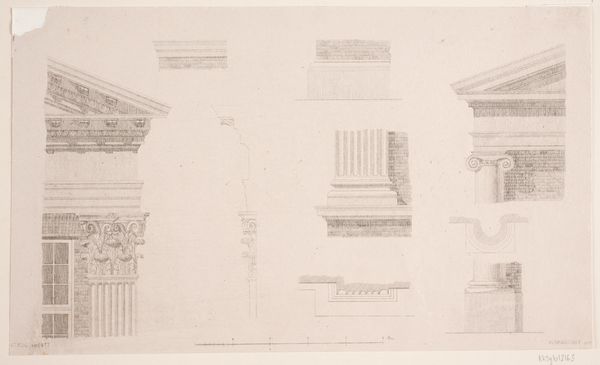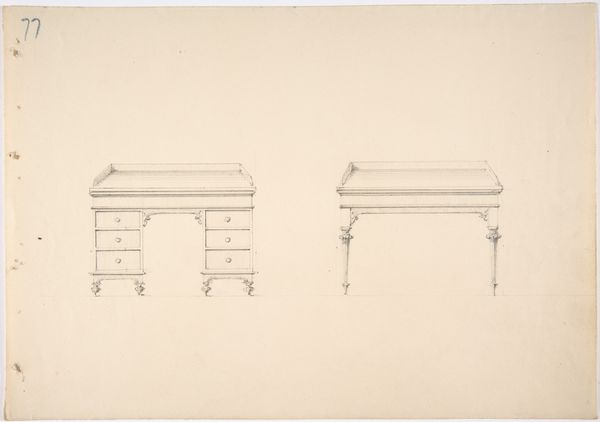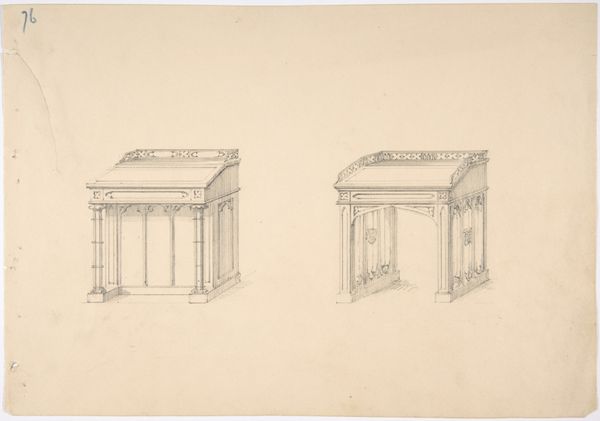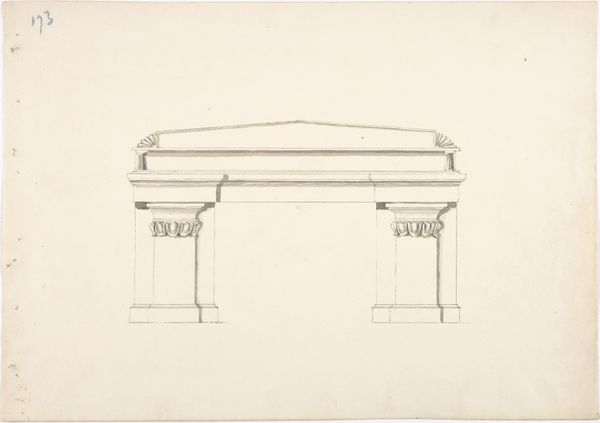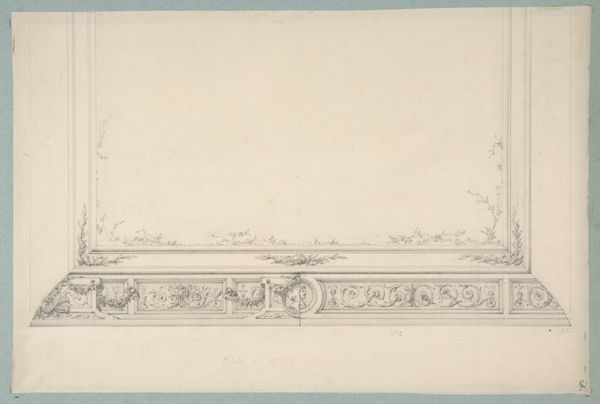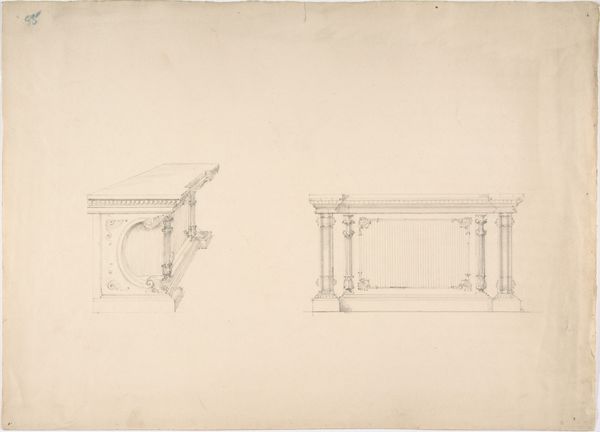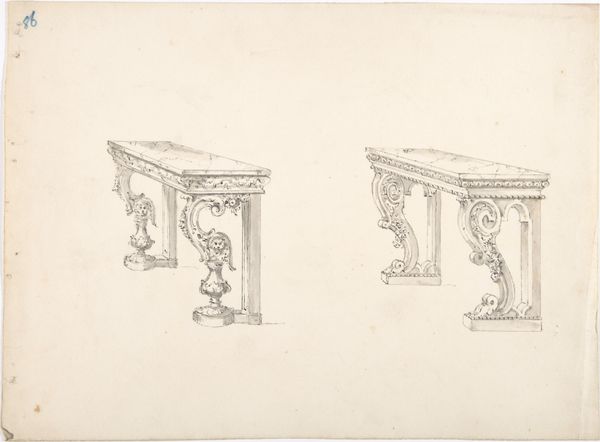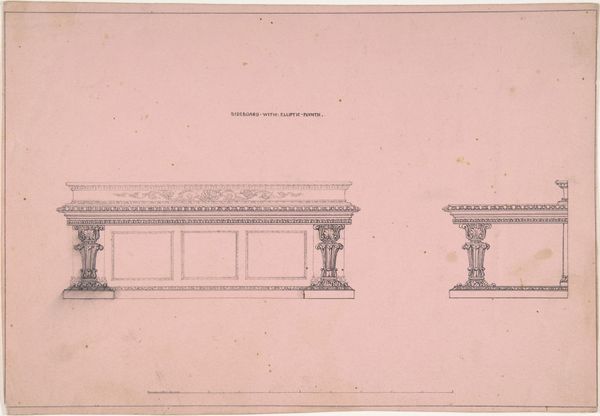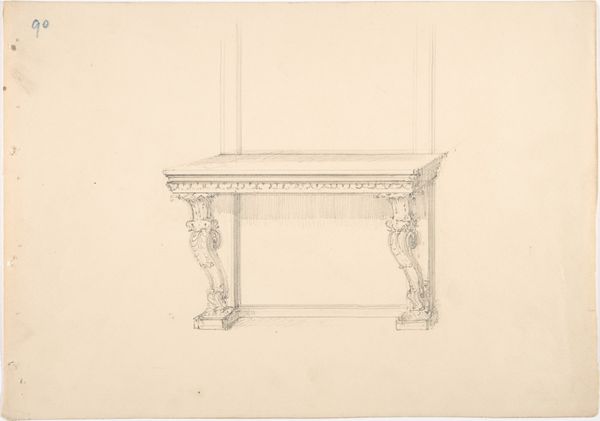
drawing, print, etching, paper
#
drawing
# print
#
etching
#
furniture
#
etching
#
paper
#
form
#
line
#
realism
Dimensions: sheet: 8 11/16 x 12 5/16 in. (22 x 31.3 cm)
Copyright: Public Domain
Editor: Here we have an etching from between 1800 and 1850 titled "Design for Two Caskets" currently residing at the Met. I'm struck by how formal they appear, almost like architectural models, but also strangely domestic. How do you interpret this work? Curator: This design, seemingly simple, speaks volumes about the socio-political context of its time. Caskets, historically, were not just containers, but potent symbols of wealth, status, and the afterlife. Given that this was produced in the early 19th century, a period defined by strict class structures, elaborate mourning rituals, and burgeoning colonialism, the design takes on added weight. What do you make of the different designs offered here? Editor: I noticed one casket has more ornamentation than the other. Is this perhaps suggestive of gender roles, maybe with the ornate one designated for a woman? Curator: Precisely. Ornate objects, even those associated with death, often reinforced existing hierarchies, drawing attention to one’s place in society. Consider the materials that would likely be used: mahogany, ebony, possibly inlaid with ivory – resources extracted through colonial exploitation. The casket, therefore, becomes a container not just for the body, but also for the complex history of power, exploitation, and social differentiation. Do you think this reading changes your initial perception of the work? Editor: Definitely. What seemed like a simple design for caskets now holds a much more complex meaning, intertwined with gender, class, and colonialism. I didn’t expect so much could be gleaned from such seemingly simple forms. Curator: Exactly. By understanding the historical and social forces at play, we reveal the intricate dialogues embedded within seemingly mundane objects.
Comments
No comments
Be the first to comment and join the conversation on the ultimate creative platform.

